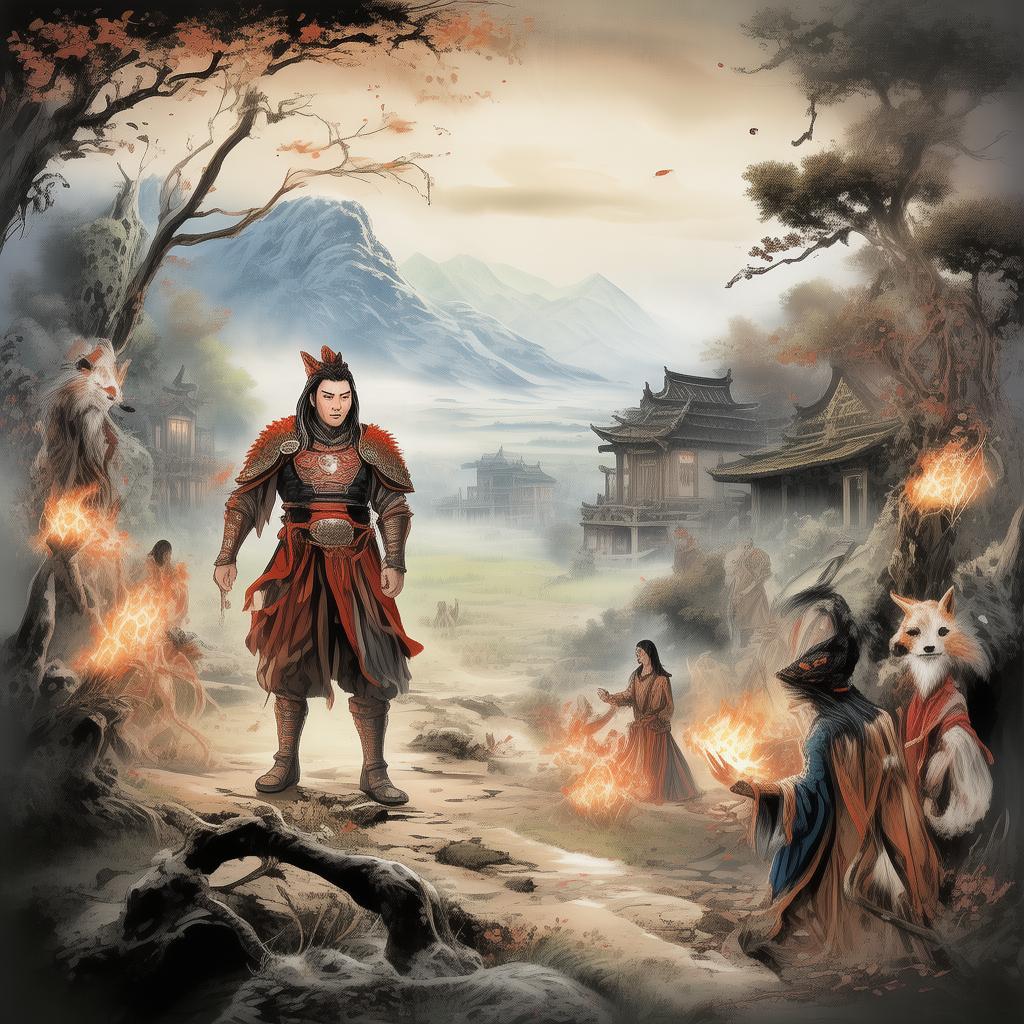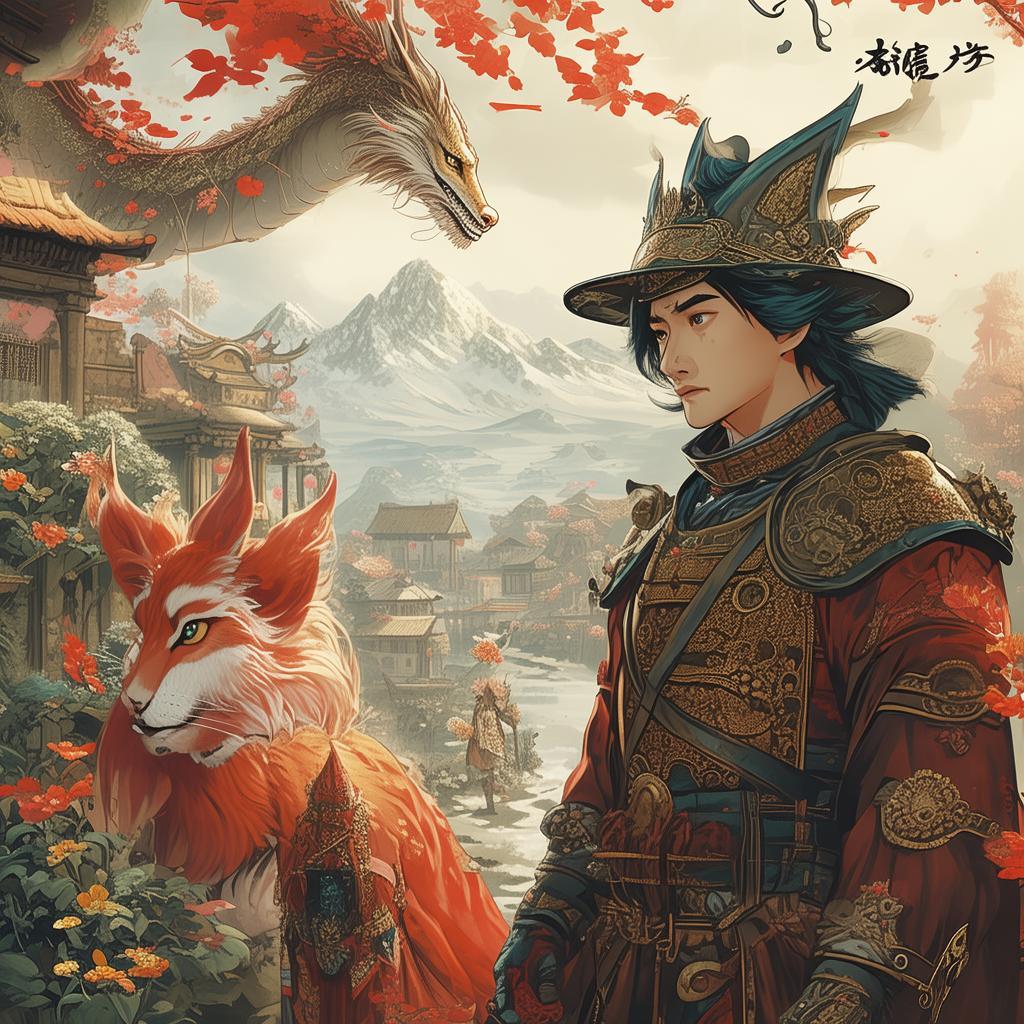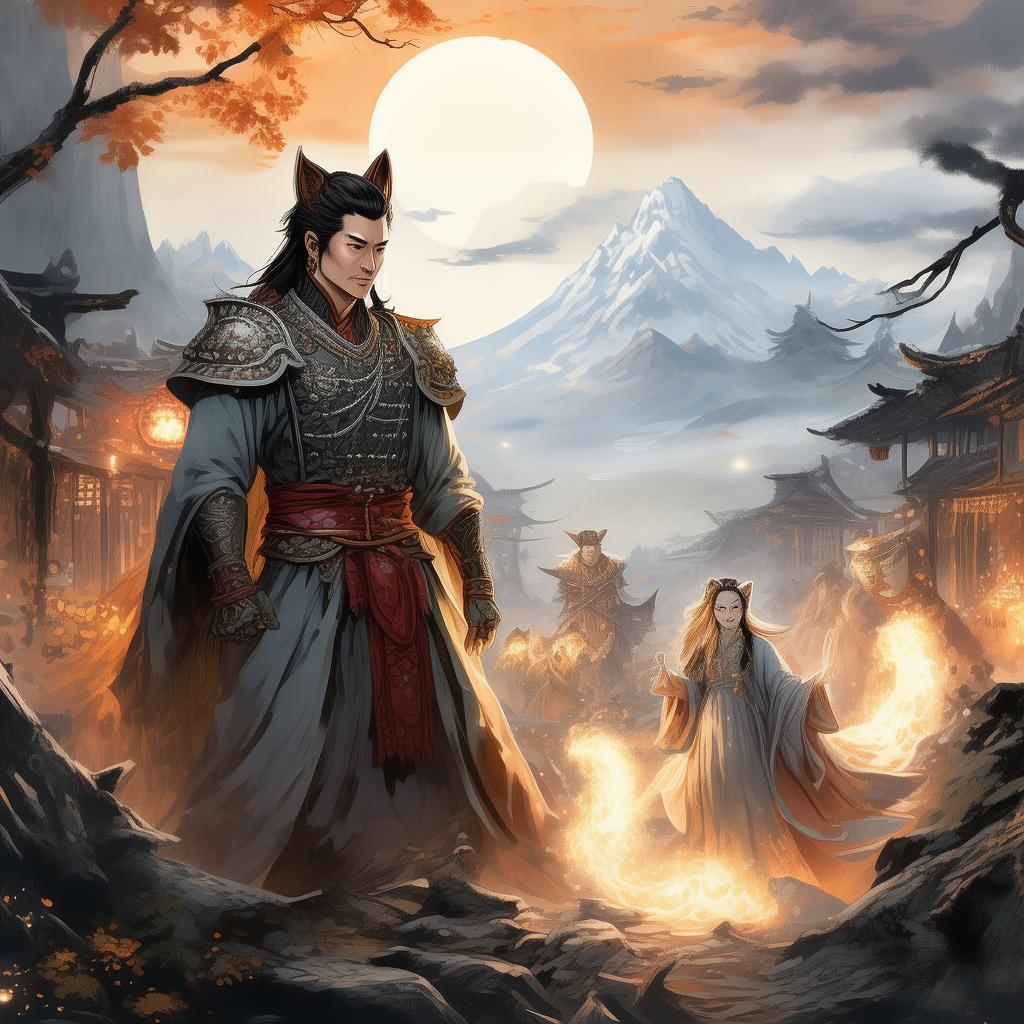Whispers of the Ancestor's Craft
In the quaint village of Jinglong, nestled between rolling hills and ancient forests, there lived a young artisan named Ming. Ming's family had been known for their exquisite craftsmanship for generations, but a tragedy had befallen the family years before. The head of the family, known as Master Li, had mysteriously vanished, leaving behind only a cryptic note that spoke of a forgotten craft that could change the world.
Ming was the last of the Li lineage, and his family's legacy rested on his shoulders. As he grew up, he was taught the basics of their craft, but he often felt a void in his heart. He yearned to understand the missing pieces of his ancestors' legacy, a yearning that his father, Master Hua, seemed to understand but never speak of.
One crisp autumn morning, Ming received a letter from a distant relative, offering him a chance to attend the annual Artisan's Fair in the neighboring city of Fenghua. This fair was a gathering of the most skilled artisans from across the land, and it was said that only the most talented could earn the title of "The Artisan's Dream."
With a heart full of hope and a resolve to prove his worth, Ming set out for Fenghua. The journey was long and arduous, but Ming's determination never wavered. As he arrived in the bustling city, he was immediately struck by the vibrant atmosphere and the sights and sounds of the fair.
He met artisans from all walks of life, each showcasing their unique skills. Ming was in awe of their creativity and dedication, but he also felt a sense of competition. He knew he had to stand out to earn the title of "The Artisan's Dream."
The fair's grand opening was a spectacle, with artisans displaying their wares under the watchful eyes of judges and spectators. Ming watched in silence, taking in every detail, when he noticed a peculiar item on display. It was a simple wooden box, intricately carved with symbols he had never seen before. The box seemed to pulse with an ancient energy, and Ming felt an inexplicable connection to it.
As the judges announced the competition's challenge, Ming's heart raced. The competition was to create a piece of art that would represent their family's legacy and their understanding of the Artisan's Dream. Ming knew that this was his chance to not only prove his worth but also to honor his ancestors.

With a newfound sense of purpose, Ming set to work. He drew inspiration from the wooden box, combining his family's traditional craft with the mysterious symbols. Days turned into nights, and Ming's hands became calloused from the relentless work. He poured his soul into the creation, and as he worked, he felt the whispers of his ancestors guiding his hands.
The day of the competition arrived, and the judges gathered around Ming's piece, a magnificent wooden structure that seemed to breathe with life. As they praised his craftsmanship, Ming's family's reputation was restored, and the title of "The Artisan's Dream" was his.
However, as the crowd cheered, Ming felt a strange sensation, as if a piece of him was missing. He couldn't shake the feeling that he had uncovered something much deeper than he ever imagined. In the days that followed, as he basked in his newfound fame, Ming found himself drawn back to the wooden box that had sparked his journey.
He approached the box with trepidation, but as he touched it, he felt a surge of energy course through him. The box opened, revealing a hidden compartment. Inside was a scroll, written in an ancient script. Ming unrolled the scroll, and his eyes widened in shock.
The scroll spoke of a secret craft, a craft that could only be mastered by one who had the blood of an ancestor who had vanished. The craft was not just about creating beautiful objects; it was about connecting to the essence of creation itself. Ming realized that his ancestors had been guardians of this secret, and he was the chosen one to continue their legacy.
With newfound understanding, Ming knew that his journey was far from over. He had to learn the true meaning of the Artisan's Dream and the Proof of Craftsmanship. As he left the fair, he felt a profound sense of purpose and a connection to the ancient craft that would guide him for the rest of his life.
In the years that followed, Ming's creations became legendary, each piece telling a story of his ancestors and the forgotten craft. The village of Jinglong talked of Ming's talents, and the whispers of the ancestor's craft were no longer forgotten. Ming had not only restored his family's reputation but also ensured that the legacy of the Artisan's Dream and the Proof of Craftsmanship would live on for generations to come.
✨ Original Statement ✨
All articles published on this website (including but not limited to text, images, videos, and other content) are original or authorized for reposting and are protected by relevant laws. Without the explicit written permission of this website, no individual or organization may copy, modify, repost, or use the content for commercial purposes.
If you need to quote or cooperate, please contact this site for authorization. We reserve the right to pursue legal responsibility for any unauthorized use.
Hereby declared.









